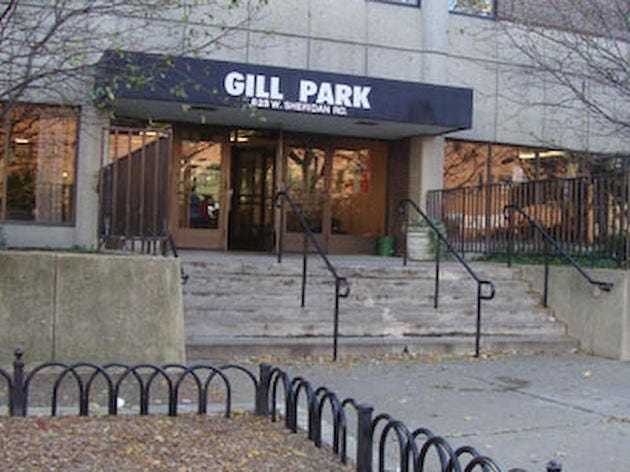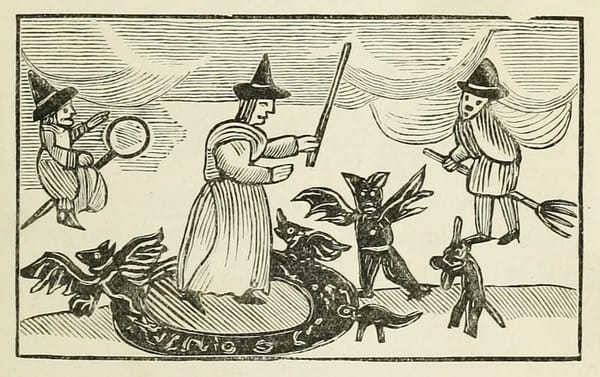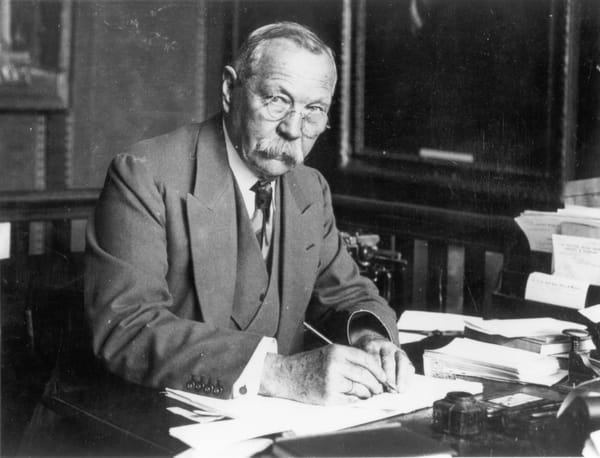Note 10: A day in the life of a Chicago poll (Pole?) worker
Count every vote.
Over the weekend, when I was starting to get my thoughts together for this newsletter, based on the polling and other factors, I expected to leave the polling place, turn in our ballots, and be walking down Chicago streets partying like Coruscant (and other planets) after the destruction of the second Death Star:
Instead, the neighborhood was quiet and the next 24 hours unfolded like Game Seven of the 2016 World Series:
As of the time of this newsletter, it’s still too early to call the results of the 2020 US Presidential Election - still waiting to hear whether Trump achieves come-from-behind wins in Arizona and Nevada - but I’ve consistently rather have been Joe Biden as opposed to Donald Trump since I tuned in. We didn’t get the blow-out game we expected, instead we got a Peter Jackson-esque election drawn out over three long movies when one would suffice.
We’ll see how this plays out. This is 2020, and anything’s still possible, so stay tuned.
Instead of looking at the top of the tickets, I wanted to write about my experience this year working as a Chicago election judge, even though I remain unclear what stealing elections has to do with Eastern Europeans:

A (long) day in the life of a poll worker
Yesterday’s election was my second general election as a Chicago election judge. I originally signed up to begin working during the primary election in 2016 (I was a Kasich Man through-and-through), and I worked a couple of municipal elections, the 2018 midterms, and the 2020 elections. Each of these include both primary and general elections, and is a decent time commitment every other year. (Note that I did not work the 2019 Chicago mayoral election, due to business scheduling conflicts.)
If you sign up to be a local election judge, you’re making the commitment to work both the primary election (if applicable) in the spring and the general election in the fall. This year, the primary election fell on the Tuesday after we returned from our cruise as everyone was getting their COVID bearings, so it was a surreal experience being a part of that event. This fall, we drowned ourselves and our voters in alcoholic hand sanitizer, masks, and other preventative measures as COVID numbers are rising locally.
When an election is imminent, the first thing you’ll do as a poll worker is to refresh your training about how to set up the polling places, operational specifics of election law (e.g. What can you do if someone brings a mail ballot to the polling place on Election Day?), and everything you need to pull off the election. Note that the central election authority (Election Central) does not provide a member of their staff to oversee you throughout the day - it’s up to you and your other volunteers (we do get paid) to make sure that the voters in your precinct can exercise their basic Constitutional rights.
After training, the next major step for me was fetching the key to our Election Supplies Carrier (ESC) the weekend before the election. Election Central drops off large metal bins on wheels to each polling place and these are locked and sealed to prevent tampering with the equipment and ballots within. If you serve as the Key Judge, you fetch the key and wire-cutters needed to open the ESC on election day. I picked the key and cutters up at a local early voting site on Halloween.
The week before the election, you are also responsible for contacting the facilities manager for your polling location. Our location was Gill Park, which is fortunately one block away from our place:

When you contact the facilities manager, you want to check and see if you can go in the Monday before the election to set up as much of the polling place as you are legally allowed to. You cannot set up any machines, or do anything with any ballots, but you can set up judging stations, polling booths and put together a plan for the next day. This usually takes a couple of hours and is time well spent.
Tuesday is Game Day. On Tuesday, election judges are required to report to their polling location at 4:45am to be admitted at 5am, and to complete the setup of the polling place before polls open at 6am. My day started a bit earlier, as we had several older ladies (Margo, Renice, and Diane) who also serve as judges and I typically meet them at their apartment business and escort them to the polling place in the dark hours of the morning. This meant that I woke up on Tuesday morning at 3:30am to shower, pack, and head out in time to meet the Ladies. (And true to form, I spent a good period between waking and leaving addressing a server disk space issue in Europe that threatened to flood my e-mail inbox with thousands of e-mails if left unaddressed. Self-employed server support is a hoot, I tell you.)
During the hour before polls open, despite the setup the day before, it’s still a frantic affair. We have to set up machines, have them phone home to Election Central to verify that they are initialized to zero-vote counts, put out our required signage, verify that our polling place is accessible, and so on. There are a hundred little things to check off, and you want to be done within an hour so you can open polls exactly at 6am. If you don’t open polls at 6am, that starts a whole cascade of troubles, one of which is violating my #1 Rule of Poll Working: DO NOT DO ANYTHING THAT WOULD GET YOU FEATURED ON THE EVENING NEWS.
We opened up at 6am and had a decent socially-distanced line of voters waiting for us. We processed them pretty efficiently and we spent a decent amount of time throughout the day waiting for voters to come see us. (More on this below.)
If you’re a voter in Chicago, here’s the typical sequence of events you will go through:
- You fill out a Form 14, which is your application for a ballot. This has your name, address, date of birth, and signature.
- You take your application to the judge at Station #1, who is operating the electronic poll book. The poll book is a small tablet computer that is networked to the Election Central computers and provides a look-up for the voters where we can verify that the voter is eligible to vote in our precinct, that they did not already vote, and we know who they are.
- If there’s no issue with your application, the judge at Station #1 will write down your ward and precinct on your application, specify which ballots you will receive (we are a split precinct that covers two politically-distinct geographic areas), and your Voter Registration Number.
- After confirming the application with the poll book, you are officially registered as having voted, and we direct you to Station #2 where you will give your application to another election judge who will put that application on a spindle recording who voted that day (this is the secondary paper trail to back up the electronic poll book), and the judge will give you your ballots and pens to complete them.
- You will take your ballot to a voting station, cast your votes for the handful of races you care about, then wonder who the hell all these judges are. As a voter, you have the right to only answer the questions you want and have them counted, so skipping the judges just means that we still count what you did answer up-ballot.
- After you marked your ballot and determined the fate of the next generation of the local judiciary, you will take your ballot to the scanner and insert the ballots yourself. The scanner will verify that you cast a valid ballot, and let you know if you overvoted (you said to both retain and fire a particular judge) or if there’s some ambiguity in your ballot that needs correction. On this latter point, we had some very new Sharpies for our ballots and we had a number of spoiled ballots (voters do get another copy to fill out) due to the ink leaking through.
- If the ballot scanner accepts your ballot (it makes a sound that I call the Thunk of Satisfaction), the judge at the scanner will give you your “I Voted” sticker, and you have officially finished doing your duty to American democracy.
There are a number of variations to this procedure such as voters who have moved (we given them a change of address form and correct their record and allow them to vote that day with proper ID and proof of residency), voters who applied for a mail-in ballot and didn’t receive it (they get to vote a provisional ballot that is counted later at Election Central), and some voters who refuse to go to their proper polling place and insist on voting at the wrong place (they get a ballot with only that federal offices that all the other residents of Illinois will be answering, with no local races like state legislators).
Election judges process voters from 6am through polls closing at 7pm. Any voters who are in line at 7pm get to vote, and we give everyone in line at 7pm the Form 14 as proof that they were present at the right time. After polls close and we process any pending voters (we didn’t have any of those this year), we lock the door and start going through the process of electronically transmitting results to Election Central (this is how Illinois could be called for Biden so quickly), completing the official results paperwork, seeing if we have to count any write-in ballots (none this year), and pack up sensitive materials to return to Election Central, and lock and seal the remaining items in the ESC for Election Central to pick up some time later.
After the supplies are secured, one Republican (that would be me) and one Democratic judge will take all of the paper ballots and the memory cards used in the ballot scanner, keys to the ESC, to a local school where the full-time election staff take those materials from us and send them to the secure locations where they will be stored in the case of any controversy that would require additional validation or a recount. We finished that around 9:30pm, which was pretty quick compared to past years. After that, I stagger home, sit down on my couch with a microwaved quesadilla, and see what happened while I was in a news bubble since 4am. Last night, I ended up staying up until about 3am, making Tuesday an 18-hour workday, and almost going 24 hours without any sleep.
So, ignoring the national picture, what were some of our local takeaways?
First of all, we saw the lowest in-person turnout in my four years of election judging. We had 104 voters cast ballots, where we were well over 600 voters four years ago. This may be a cause of concern, but I also know that we have about 1,100 eligible voters and confirmation that at least 350 of them requested and submitted their mail-in ballots. There was a similar number of people of who requested a mail-ballot and had not returned it when my precinct list was printed, and I think a good number of those did successfully submit their ballots via the post office or at a designated drop box. (Note that we were not a drop box location, and we had to direct folks to the appropriate location, since we were legally prohibited from transporting those ballots. A mail-in ballot could be surrendered to us to be cancelled, and a regular paper ballot issued.) And finally, we had zero visibility into the people who chose to vote early at any one of the city’s early voting locations. Taking all those factors into effect, I strongly suspect that our local precinct broke voting records when all the ballots are counted for members of our precinct.
We ended up having to issue around ten provisional ballots for folks who applied for their mail-in ballot, but did not receive it. Since we did not have a physical ballot to verify their claim, they received a provisional ballot. If no mail-in ballot was received at Election Central, the provisional ballot will be counted. If Election Central did receive a mail-in ballot, they’ll decide which to count, and the voter will have to answer some uncomfortable questions about why they attempted to cast two votes.
We had no issue with anti-maskers at our location and folks were responsible given the pandemic.
We had a solid crew of four of us who had worked together as election judges and three new election judges. Chicago increased the pay and lowered the required age, so we had a new professional fellow, a law student, and a very sharp high-school student added to our ranks this year. In some years, we’ve had dead-weight “helpers” (we shunt them off to do something simple that won’t slow down the critical paths), but this was not one of those years.
Due to the good crew this year, I was back home a little after 9:30pm and for the first time in a few years, I got to see election returns. That was nice.
All-in-all, this was probably the smoothest experience I’ve had judging. It’ll be interesting to see to what extent that was due to low in-person turnout versus having sharp motivated individuals deciding to spend their day in service to self-government. I strongly suspect the latter, and I look forward to seeing some of these folks in 2022.
Interesting reads and watches
Sturgill Simpson & K-Pop: The Kind Of Unity We Need In 2020 (Whiskey Riff)
Next week, I’ll probably unpack What It All Means when we have some more clarity into the ultimate outcome of this election. In the meantime, I’ll continue to watch the Tenth Inning of the 2020 Presidential Election to see what happens next.
Stay frosty, CMDRs. o7!



